While he was pondering this unusual Gewürztraminer, his friend, wine consultant Cláudio Martins, asked him what he thought. Emanuel took another sip and replied: “This is incredible.”
That was six months ago, before Emanuel became head sommelier at London’s Restaurant 1890 by Gordon Ramsay. That evening, he also tasted an impressive white blend comprising Arinto, Alvarinho and Encruzado and a red blend featuring Touriga Franca and Touriga Nacional. Both tasted deceptively young. So, the next day, Cláudio took Emanuel to the place where the wines had aged – in metal cages beneath the Atlantic Ocean.
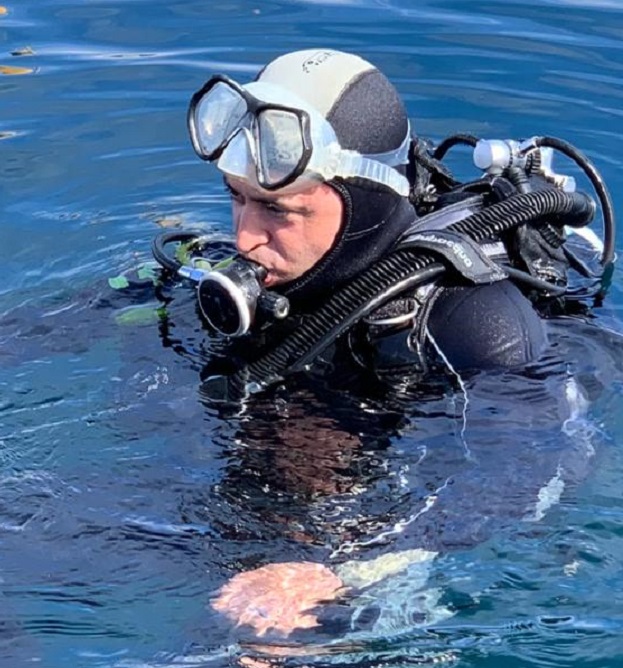
Having learnt to dive while working as a chef on cruise ships, Emanuel (above) donned a wetsuit and breathing apparatus and collected three bottles from a cage on the seabed. The same line-up of wines they had tasted the previous evening.
Then they tasted the same wines from the winery side by side. The winery, Quinta Brejinho da Costa, has 40ha of vineyards 7km from the sea and 65km from the underwater storage at Ilha do Pessegueiro on the Portuguese Peninsula de Setúbal.
It was a revelation for Emanuel, who switched from cooking to wine after tasting a Bodega Numanthia Termanthia 2002 in Spain. “It took me to the land, to the people, to the traditions of the place,” he recalls.
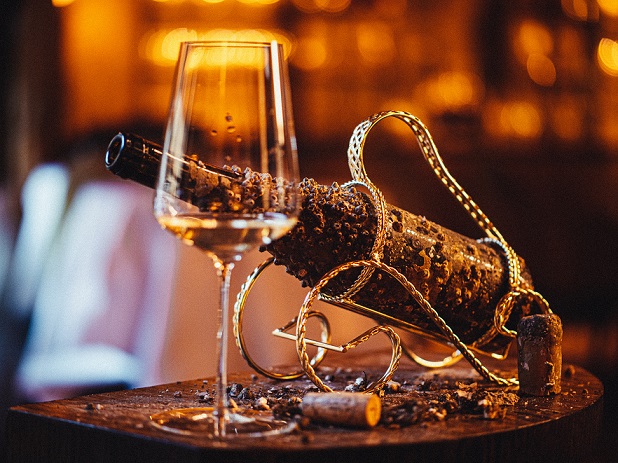
These underwater-aged wines are now doing the same for guests at Restaurant 1890, at The Savoy Hotel.
In the run-up to Christmas, the restaurant launched a sixth pairing menu featuring six wines aged at depths of 10, 20, 30, 40 and 50 metres at Porto Covo and also Marina de Sines for 12, 18 or 24 months. The wines, served in their barnacled bottles (above), include a sparkling white (matched with oyster), a rosé (with Orkney scallop), the white blend (with sole), the red blend (with fallow deer), the Gewürztraminer (with Vacherin Mont d’Or, a soft cheese from Switzerland), and a sweet Moscatel Roxo Licoroso (superbly matched with hazelnut soufflé). The cost of this pairing menu is £225 per person.
The company behind the underwater ageing project is Adega do Mar – which offers the service to wine producers and also promotes subaquatic wine tourism.
'The deeper they are, the higher the atmospheric pressure'“Wines age slower underwater,” Emanuel comments. “The deeper they are, the higher the atmospheric pressure, the wines therefore maintain their freshness much longer – some taste as if they’ve just been bottled, depending on the style of wine, even those which have been in the sea for two years.” Emanuel also puts this down to the cold temperature and darkness.
“We have our own cage at Porto Covo where we will be experimenting with a number of wines. Our initial stock was just 100 bottles of each of the six styles.” But they are getting through them quickly as the sea pairing menu is proving extremely popular.
“It’s had a huge impact,” Emanuel continues. “When you come out with these bottles to the table, with the barnacles, and explain the difference between the depths – every wine is on a different depth; 10, 20, 30, 40, 50 metres – they love it!”
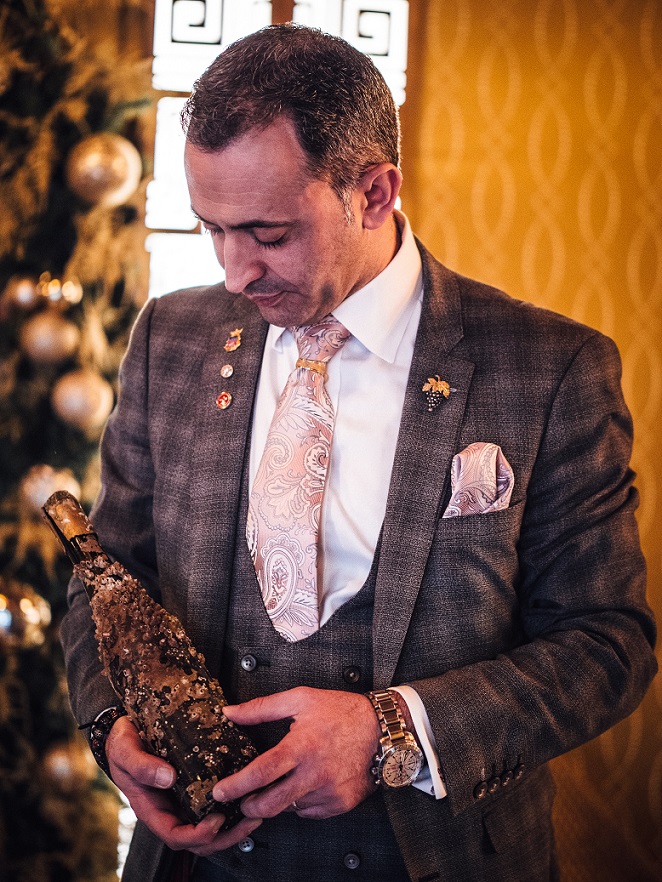
He loves the project, too, as he’s the one who collected the bottles from the sea and brought them to the guests’ tables. There, he hopes to awaken the same “sense of mystery about the power of wine and its connection to history, to nature,” that he had when he tasted the Bodega Numanthia Termanthia 2002 in 2005. And, as that wine did for him, he wants to transport the guest to “that area, that land”.
“If they close their eyes, taste that wine – can they feel they are sitting by the sea?”
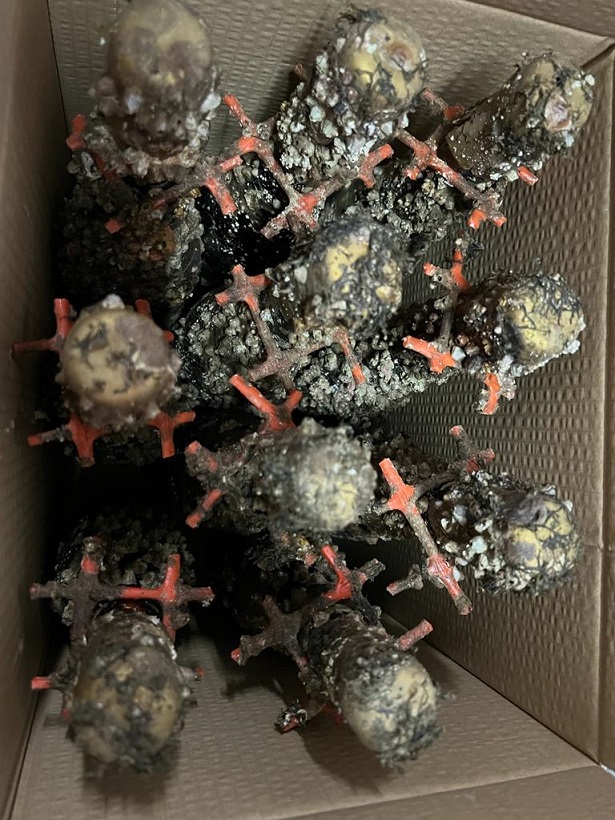
Restaurant 1890 now has its own locked cages, monitored by camera and sensors. The cages now contain wines from 20 top producers, with Emanuel storing the same wines in the cellar at the restaurant.
The cages currently take 20-30 bottles, but Adega do Mar is looking at larger options. Currently, the company can store about 10,000 bottles in the Peninsula de Setúbal but it is hoping to have capacity for 100,000 bottles by the end of the year.
Emanuel says that since he first came across Adega do Mar, they have been experimenting with the best way to store the wines – testing different waxes to protect the cork from the sea water, testing the length of storage time underwater (tasting the wines after three, six, nine, 12, 18 and 24 months), and the depth. “Every 10 metres gives you another bar of pressure on the wine,” Emanuel points out. The shallower depths also have more movement from the current and sealife.
One of the surprising findings was that Burgundy-style bottles work better than Bordeaux bottles, because of their shape and the way the little bubble of air moves with the motion of the sea.
“The beauty behind it is every bottle is slightly different,” Emanuel says. “It does not change the palate; it changes the first impact on the nose. But when you decant the full bottle, they are all the same.”
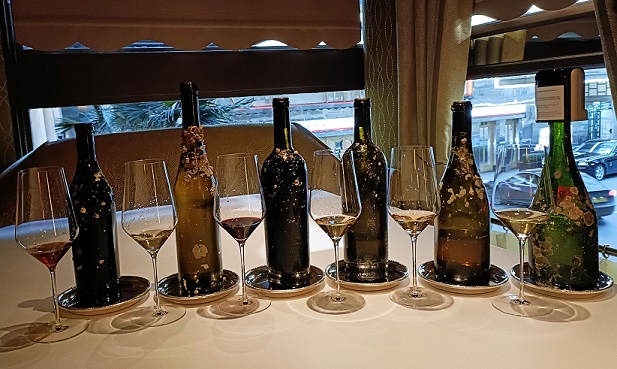
As I tasted through the impressive line-up of wines, I wondered if the extra expense of ageing wine underwater was worth it.
Emanuel replied: “It’s a story that is beautiful. Does that cost justify what is in the bottle? I think the quality of wine was there already from day one, otherwise I would not put my hand on a project like this, because for me it’s the quality above everything else. That’s why we have what we have.”
What they have is a very impressive set of pairing menus and an amazingly long wine list, especially for a 24-seat restaurant. It has 700 wines, 100 by the glass – including Madeiras from 1705, 1775, 1789, 1808, and, of course, 1890! The list, as you might expect, contains plenty of wines from Burgundy, Bordeaux and Champagne, with prices from £50 to £40,000, and a choice of five vintages.
But there are also wines from Israel, China, Slovakia, and Turkey. I spot one of my favourites on the list – an amber wine from Georgia (the 2019 Qvevri Kisi from Dakishvili Family Selection) which is paired with bouillabaisse à la Parisienne.
“The wine list has a little bit for everyone to touch their hearts,” Emanuel explains.
Quinta Brejinho da Costa’s sea-aged wines
Sparkling wine – MillésimeVarieties: Arinto, Antão Vaz and Castelão
Winemaking: Classic method with manual remuage
Ageing: 36 months in bottle with lees from the second fermentation and 12 months in bottle at 20m under the sea
Rosé
Varieties: Castelão, Touriga Franca and Touriga Nacional
Winemaking: Manually selected grapes are gently pressed before fermentation in a stainless-steel tank at 12-15°C. 25% of the batch is matured in French oak barrels
Ageing: 12 months in 225L barrel and 12 months in bottle at the bottom of the sea at a depth of 20m
White wine – Vinho do Atlantico White
Varieties: Arinto, Alvarinho and Encruzado
Winemaking: The pressed juice goes into tanks for 24 hours' maceration.
Ageing: 12 months in French oak barrel and 12 months underwater at a depth of 40m
Red wine – Vinho do Atlantico Red
Varieties: Touriga Franca, Touriga Nacional and other varieties
Winemaking: Traditional red wine vinification in cement tanks
Ageing: 18 months in barrel and 12 months in bottle underwater at a depth of 30m
Gewürztraminer
Winemaking: The pressed juice goes into steel tanks for 24 hours' maceration.
Ageing: Aged in barrels for 12 months and another year in bottle at a depth of 40m
Liqueur wine
Variety: Moscatel Roxo
Winemaking: Manually selected grapes are macerated for five months in a brandy of wine origin.
Ageing: 106 months in 225L barrel and 24 months in bottle at the bottom of the sea at a depth of 20m


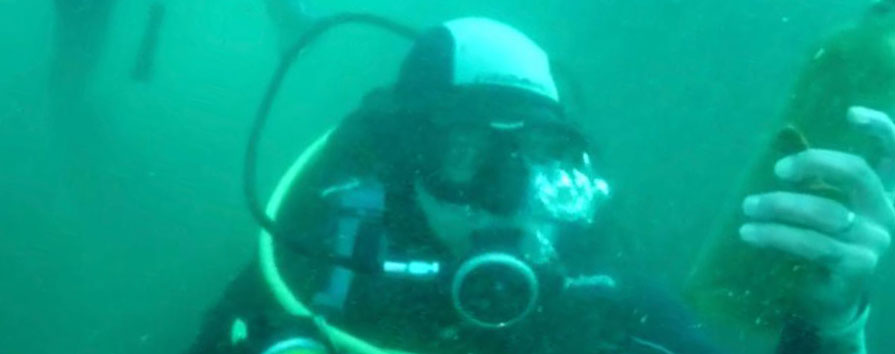










.png)






